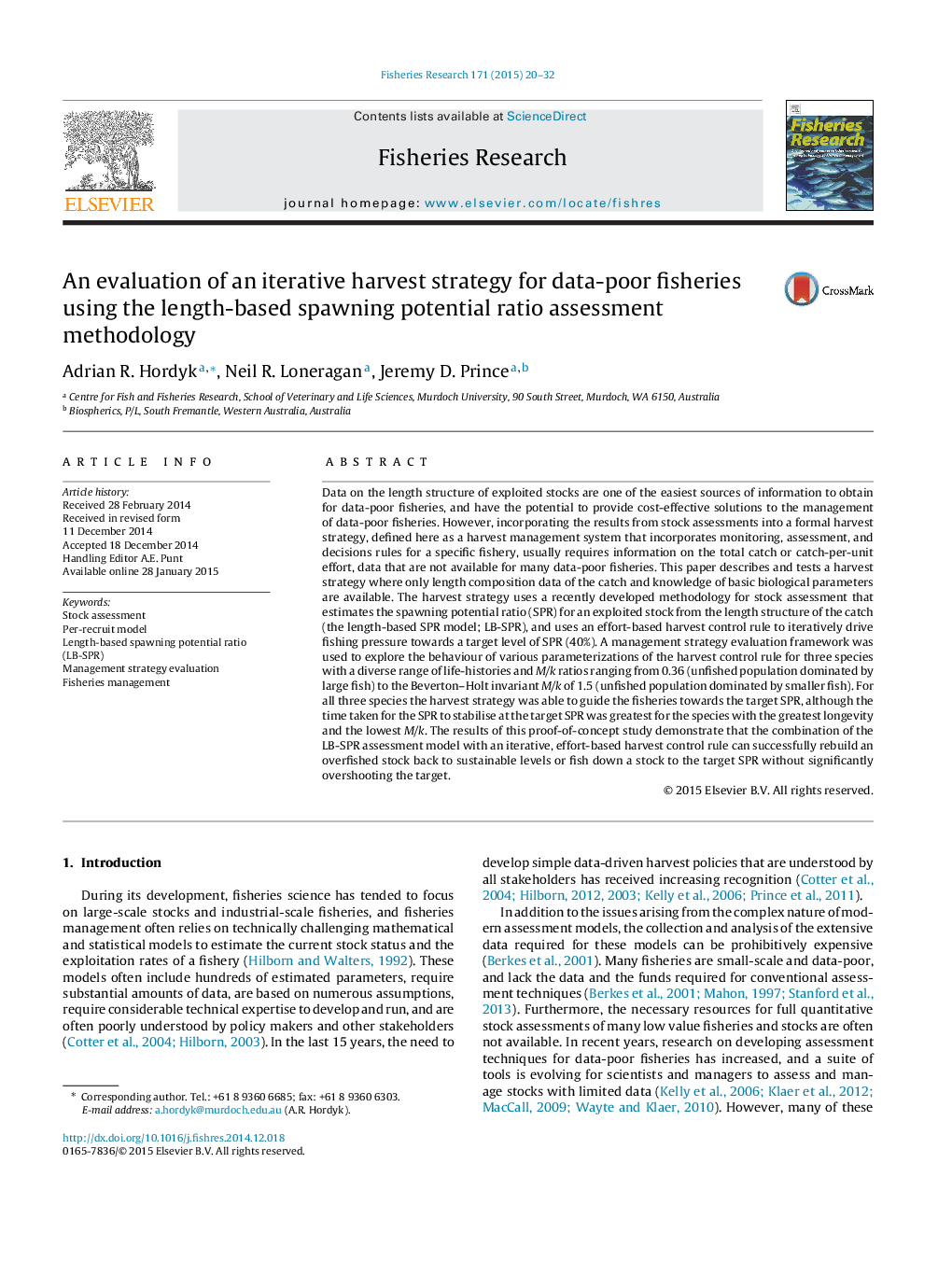| کد مقاله | کد نشریه | سال انتشار | مقاله انگلیسی | نسخه تمام متن |
|---|---|---|---|---|
| 4542767 | 1626797 | 2015 | 13 صفحه PDF | دانلود رایگان |
Data on the length structure of exploited stocks are one of the easiest sources of information to obtain for data-poor fisheries, and have the potential to provide cost-effective solutions to the management of data-poor fisheries. However, incorporating the results from stock assessments into a formal harvest strategy, defined here as a harvest management system that incorporates monitoring, assessment, and decisions rules for a specific fishery, usually requires information on the total catch or catch-per-unit effort, data that are not available for many data-poor fisheries. This paper describes and tests a harvest strategy where only length composition data of the catch and knowledge of basic biological parameters are available. The harvest strategy uses a recently developed methodology for stock assessment that estimates the spawning potential ratio (SPR) for an exploited stock from the length structure of the catch (the length-based SPR model; LB-SPR), and uses an effort-based harvest control rule to iteratively drive fishing pressure towards a target level of SPR (40%). A management strategy evaluation framework was used to explore the behaviour of various parameterizations of the harvest control rule for three species with a diverse range of life-histories and M/k ratios ranging from 0.36 (unfished population dominated by large fish) to the Beverton–Holt invariant M/k of 1.5 (unfished population dominated by smaller fish). For all three species the harvest strategy was able to guide the fisheries towards the target SPR, although the time taken for the SPR to stabilise at the target SPR was greatest for the species with the greatest longevity and the lowest M/k. The results of this proof-of-concept study demonstrate that the combination of the LB-SPR assessment model with an iterative, effort-based harvest control rule can successfully rebuild an overfished stock back to sustainable levels or fish down a stock to the target SPR without significantly overshooting the target.
Journal: Fisheries Research - Volume 171, November 2015, Pages 20–32
